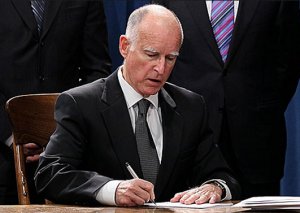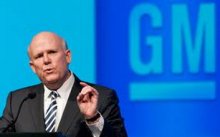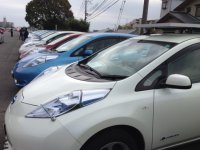 Agribusiness giant Monsanto has become a very telling symbol of the world we live in today – developing scientific formulas and technologies with huge moral implications and baffling complexities; behind-the-scenes political and economic power; brand identity without human personality; and becoming the enemy that we seem to need. Thinking about Monsanto can push buttons that apply to alternative fuels and advanced technology vehicles – potentially creating more problems than the solutions they were intended to deliver. Here are some points to consider….
Agribusiness giant Monsanto has become a very telling symbol of the world we live in today – developing scientific formulas and technologies with huge moral implications and baffling complexities; behind-the-scenes political and economic power; brand identity without human personality; and becoming the enemy that we seem to need. Thinking about Monsanto can push buttons that apply to alternative fuels and advanced technology vehicles – potentially creating more problems than the solutions they were intended to deliver. Here are some points to consider….
- This summer, results of a survey came out taken by NaturalNews that placed Monsanto far into first place as the “most evil company” at 51% of respondents. That was followed by the Federal Reserve at 20% (think Occupy Wall Street); British Petroleum at 9% (think Deepwater Horizon oil spill); Haliburton at 5% (think war in Iraq); and 3% chose McDonald’s (think “Super Size Me”). BP was definitely the villain for a long period of time after the gulf spill in April 2010, much like Exxon was after the 1989 Alaska oil spill.
- Genetically Modified Organisms (GMO) has been the ominous issue for a few years now with Monsanto. Many people saw the film “Food Inc.” that devoted a large portion of the movie to uncovering the role Monsanto has been playing in pushing GMO. Genetically modified seeds end up in a lot of the processed food we eat through high fructose corn syrup; and most of the produce in supermarkets is now genetically modified – though Monsanto doesn’t control all of it. GMO is said to have started years ago to deal with insect infestations destroying cornfields and other crops, and eventually became the norm with Monsanto pulling strings in many state and federal lawsuits and legislative actions. Monsanto and other agribusiness giants defeated GMO product labels in several states last November that were put on the ballot to inform the public about what’s in the food they’re eating. Some of these anti-GMO advocacy groups talk about studies being done on the harmful health implications of GMO, but nothing definitive and official has really come out on it yet.
- Monsanto looked like a real villain last spring when the US Agriculture Department had initially adopted the company’s requested loophole giving GMOs a lot of freedom and little regulation – called the Farmer Assurance Protection and also dubbed the “Monsanto Protection Act.” Many people were deeply disappointed with President Obama after hearing about it – thinking that an evil giant organization had corrupted a once admirable presidency. As of yesterday, that legislative rider is no longer effective due to the budgetary battle that’s still persisting in Washington with the employee furlough. There’s been a gap between the House and Senate version that will need to get sorted out, with the Senate wanting to delete the Monsanto provision.
- Monsanto just acquired the Climate Corporation for $930 million. The acquired company works with data analytics on weather patterns and predictions to help farmers adapt to climate change. Weather monitoring, data modeling, and weather simulations are provided on how predicted weather conditions will affect crops. Famers are given technology tools to better manage their risks. Farmers can dig into the data on their computers and mobile devices that can be whittled down to their individual fields. Monsanto has been expanding its offerings and is moving into data services for agribusiness. Climate Corporation had previously attracted some big names into its list of financial backers including Khosla and Google Ventures.
- There are some analysts who have deep concerns about the acquisition but are not getting any real attention in media coverage. They’ve expressed concerns over the solar radiation management (SRM, which controls sunlight before it reaches the earth) and geo-engineering (artificial modifications of the planet’s climate systems through SRM and Carbon Dioxide Removal) that Climate Corporation uses. These are quite complex issue and it’s not clear to non-scientists what’s going on behind the scenes with the merger and if these mysterious technologies are actually positive or negative.
- Overseas markets are leery of GMO and tend to place restrictions on imports from US agribusiness. There was also a report back in May from watchdog group Food & Water Watch that accuses the US State Department of working with Monsanto and other GMO seed companies to push biotech crops overseas and expand the US market’s reach. The concern was that overseas farmers would be forced to buy genetically modified seeds and agrichemicals (as has happened in the US market). Last month, the US Department of Agriculture began evaluating whether or not to take action in the case of a Washington state farmer whose alfalfa crop was contaminated with a genetically modified trait that some export customers will not accept. Federal agriculture officials notified the USDA’s Animal and Plant Health Inspection Service that they had confirmed a “low-level” presence of a genetically engineered trait in what the farmer thought was a non-GMO crop. The trait was developed by Monsanto Co. to make plants able to tolerate treatments of Monsanto’s high sales-volume Roundup weedkiller.
- Sustainability and cleantech publications Environmental Leader and GreenBiz offer mixed messages on Monsanto. There’s coverage of GMO disputes but it’s more business news than ethical warning. Monsanto’s fight with farmers, consumers groups and NGOs was mentioned as an example of corporations having their public image effectively assaulted. The writer says that the company was brought down by what these activists have been up to, but Monsanto appears to be alive and well. Its image has been assaulted but its stock price and business deals are booming. Another article listed Monsanto as one of the members of the Sustainability Consortium, which is an organization that creates sustainability standards for consumer products. So, its credentials in sustainability are a mixed bag, depending on what’s being written about.
- The implications of Monsanto’s power are massive – beyond nearly everyone’s ability to clearly process and perceive. These dilemmas persist in every field. Every one of the green transportation fuels and technologies faces a stack of problems – some of them ethical and many of them in proving their value that’s needed to earn financial backing and stakeholder support. The biofuels community tends to stay in united support for all the renewable fuels coming out, though corn ethanol is a very tough fuel to support. Electric vehicles find their share of cynics making the case that these vehicles are in no way improving the environment. Natural gas faces the fracking issue; hydrogen fuel cell vehicles are quite expensive and won’t have the long-awaited “hydrogen highway” of fueling stations for several years, if ever at all. They all face the clichés and concerns of a new technology creating more problems than the solution it was intended to create.
- Monsanto is the great unknown, the evil empire. It seems to be connected to the American tradition of looking for conspiracy theory. Monsanto has market value at about $55 billion on the stock market and has deep reserves – its ability to lobby and disseminate its marketing-communications message is quite strong. We don’t really know the full implications of GMO – and DNA engineering is pervasive in much of our food and medicine. There may be some benefits that we can’t yet see – and the same goes for its Climate Corporation acquisition and what it might offer for predicting and preparing for climate change. Still, there’s always the horrific vision of genetic modifications causing monster-like mutations or children having breathing and circulation problems that appear unexplainable and untreatable. GMO and Monsanto’s Climate Investment investment are packed with the unknown – we’ll have to wait and see how it turns out.









